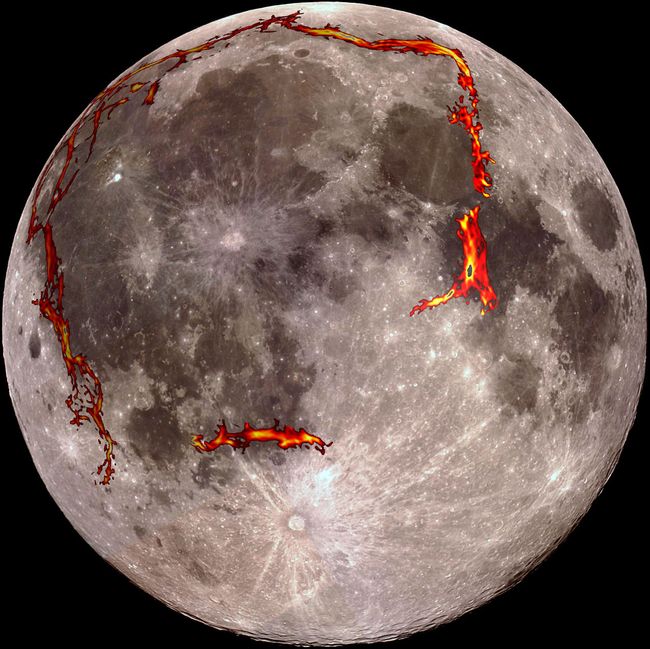The Moon Isn’t ‘Dead’: Ridges on Lunar Surface Show Signs of Recent Tectonic Activity
“There’s this assumption that the moon is long dead, but we keep finding that that’s not the case.”
By Chelsea Gohd | Staff WriterSPACE.COM – May 4, 2020 | The moon isn’t “dead” after all. Newly discovered ridges on the moon’s surface are leading scientists to think that the moon might have an active tectonic system.
The full moon as seen from the Earth, with the Ocean of Storms (Oceanus Procellarum) border structures superimposed in red. Scientists now think this huge feature on the moon was formed by lunar lava early in the moon’s formation, and not a cataclysmic impact. New research shows that there could could be active tectonic systems on the moon today.
(Image: © Kopernik Observatory/NASA/Colorado School of Mines/MIT/JPL/Goddard Space Flight Center)Using data from NASA’s Lunar Reconnaissance Orbiter (LRO), researchers have discovered a number of ridges with exposed bedrock, free of lunar regolith, or powdery lunar “soil,” spread across the moon’s nearside surface. These ridges, speckled with boulders, could be evidence that, not too long ago, tectonic activity broke apart the moon’s surface.
While most of the moon’s surface is covered in lunar regolith, there are a few, rare patches of this exposed bedrock. But, because regolith builds up quickly on the surface, there must be something creating these ridges with exposed bedrock on the moon, Peter Schultz, a professor in Brown University’s Department of Earth, Environmental and Planetary Sciences and co-author of a new study describing the findings, said in a statement.
